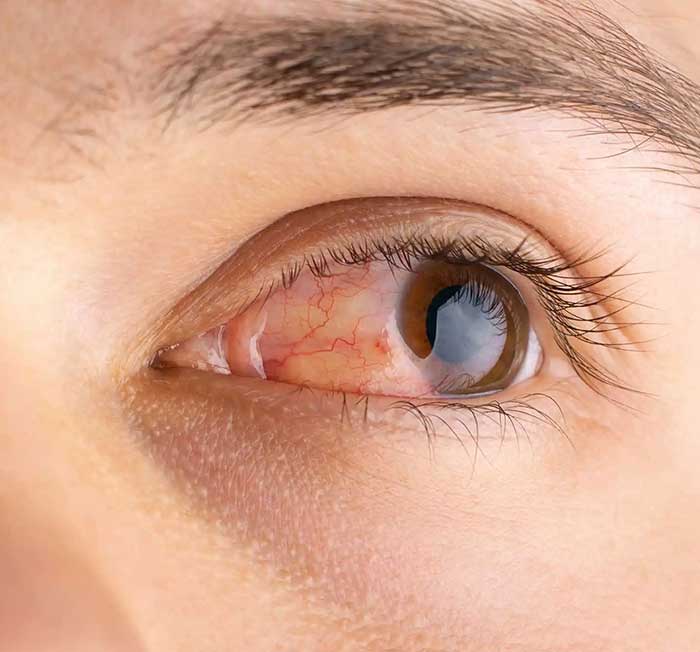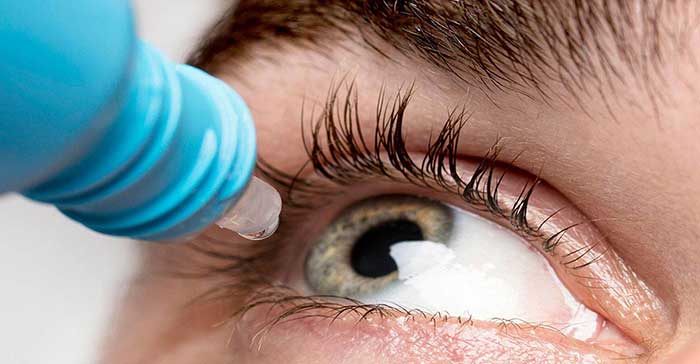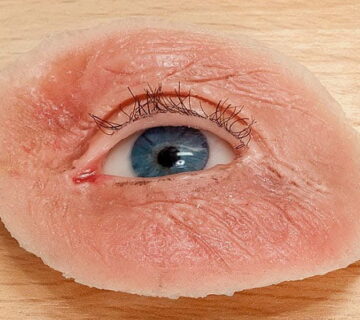Treating an artificial eye infection is essential. In this article, we have tried to address some points regarding this matter.
The use of specific medications for treating an artificial eye or ocular prosthesis infection is particularly important and should be noted:
Eye Drops: Aqueous or oily solutions produced in a completely sterile environment. Nowadays, drops are used for eye washing and treating certain eye problems such as eye allergies, eye infections, glaucoma, cataracts, sensitivity, or dry eye. These drops generally do not have side effects. A serious recommendation: never use them arbitrarily without a doctor’s prescription.
Moxifloxacin:
An antibiotic from the fourth generation of fluoroquinolones. Moxifloxacin is a broad-spectrum antibiotic and one of the best medications for mobile ocular prostheses; it completely eliminates gram-positive and gram-negative bacteria. This drug’s mechanism of action is that it exerts its effect by inhibiting the enzyme DNA gyrase (a type of topoisomerase II enzyme) and the topoisomerase IV enzyme.
Gentamicin Eye Drops:
In today’s medical world, Gentamicin eye ointment or sterile Gentamicin eye drops are used to treat severe inflammation of the eyelid and conjunctiva, inflammation of the tear duct, and inflammation and ulcers of the cornea. The cause of these symptoms can be minor and superficial eye infections. Fortunately, these drops can also be used for artificial eyes or ocular prostheses.
Aciclovir Eye Ointment:
Aciclovir eye ointment is used to treat inflammation of the cornea. This drug is easily absorbed through the corneal epithelium and the superficial eye tissue, and one of its special uses is treating ocular prosthesis infections in patients.
Betamethasone:
Betamethasone is generally used to treat inflammatory and allergic conditions of the eye and ear in individuals who respond to corticosteroids. This drug can be absorbed through the aqueous humor, cornea, iris, choroid, ciliary body, and retina. If no improvement is seen after 5 to 7 days of using Betamethasone drops or ointment, a specialist doctor should be consulted. Instill 1 to 2 drops of the solution into the eye every 1 to 2 hours, and gradually reduce the amount of medication used as the eye inflammation decreases. During the day or when going to sleep, place half to one centimeter of the ointment inside your eyelid, two to three times.
Chloramphenicol-Ophthalmic:
Chloramphenicol is a broad-spectrum antibiotic that inhibits bacterial growth and acts by inhibiting protein synthesis in bacteria. Sometimes a burning or stinging sensation in the eye is felt after using this drug. Nevertheless, it can be one of the very useful drugs for use in patients with prostheses or artificial eyes.
Ciprofloxacin-Ophthalmic:
This drug is used in the treatment of superficial eye infections, such as corneal ulcers. A burning sensation or eye itching after using this drug, as well as eye discharge, may be observed. Today, this drug is used to treat infections in individuals who have an ocular prosthesis or artificial eye. Warning: This drug is not applicable in children under 12 years of age.
Gatifloxacin-Ophthalmic:
This antibacterial and anti-infective drug is generally used to treat conjunctivitis or eye redness in patients. And, in its own right, it is very effective for treating infections in individuals who have an ocular prosthesis or artificial eye.
- Liposic Eye Gel
- Najo Tears Artificial Tear Gel
These two artificial gels are eye lubricants and are used to relieve dry eye.

Artificial Eye Care Methods:
- Before handling the artificial eye, you must wash your hands thoroughly, observing complete hygienic principles.
- Remove the artificial eye only when necessary.
- Before using the artificial eye, completely cover the toilet lid and the sink drain.
- Wash the artificial eye with mild soap and water. It is better to use baby shampoo. Never use abrasive materials or alcohol, as they can cause serious damage to your eye prosthesis.
- To clean the entire eyelid, use a damp washcloth or a clean cotton swab.
- In case of dry eye, consult with your specialist doctor or ocularist regarding lubricating your eye prosthesis.
- Swimming is not problematic for people with an eye prosthesis. However, when diving, water skiing, or opening their eyes underwater, they must use special swimming goggles to prevent the prosthesis from coming out.
- When you remove your artificial eye for more than a few minutes, always place it in a container filled with water.
- If you notice an infection or any serious problem related to your eye, you must visit a specialist ocularist.
- The artificial eye should be evaluated at least once a year by the specialist who made the prosthesis (ocularist). Polishing, which means removing any roughness on the surface of the artificial eye, must be performed by a specialist. For children, cleaning and polishing the eye prosthesis should be done every three to six months by the relevant specialist.
- Always use special protective glasses (with polycarbonate lenses) to protect the healthy eye. If you wish to use decorative glasses, consult with your ocularist.




No comment